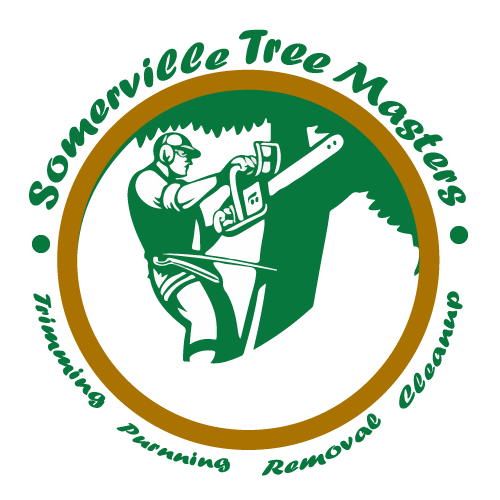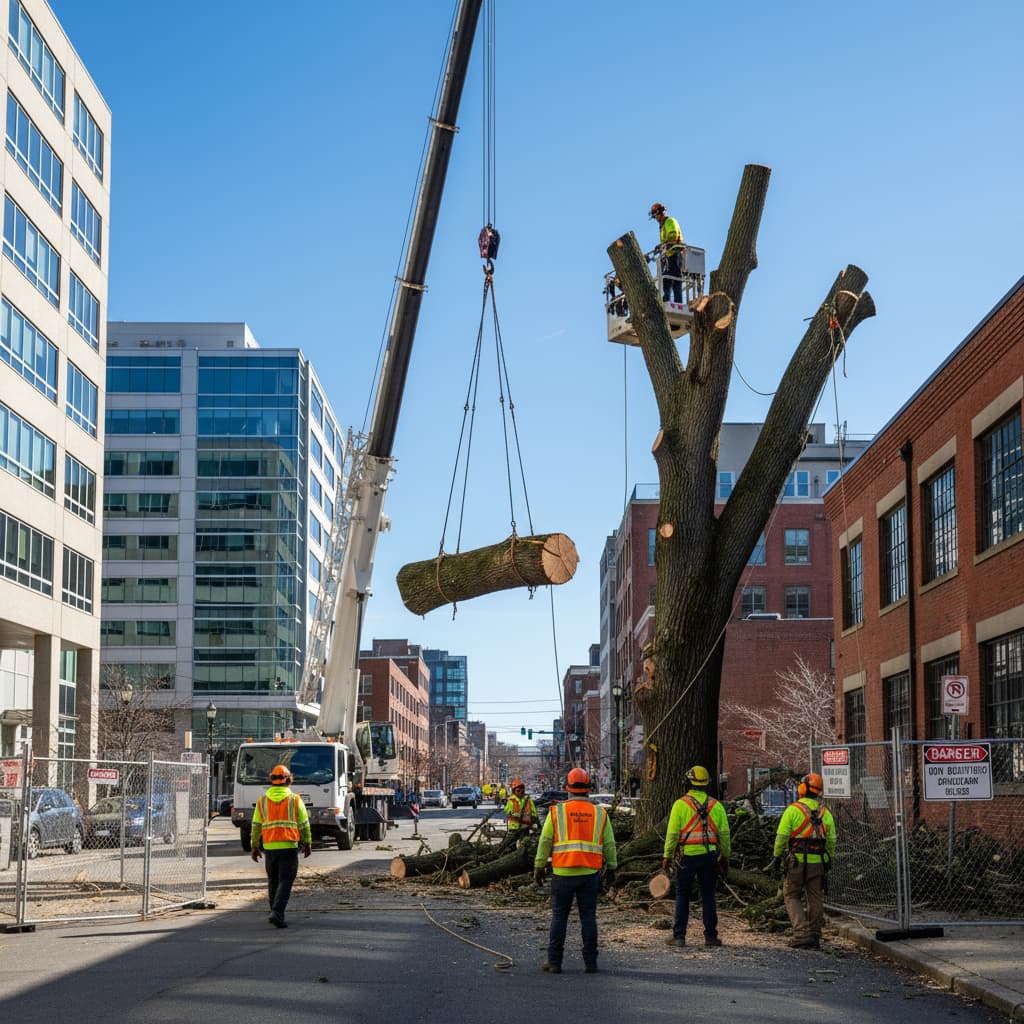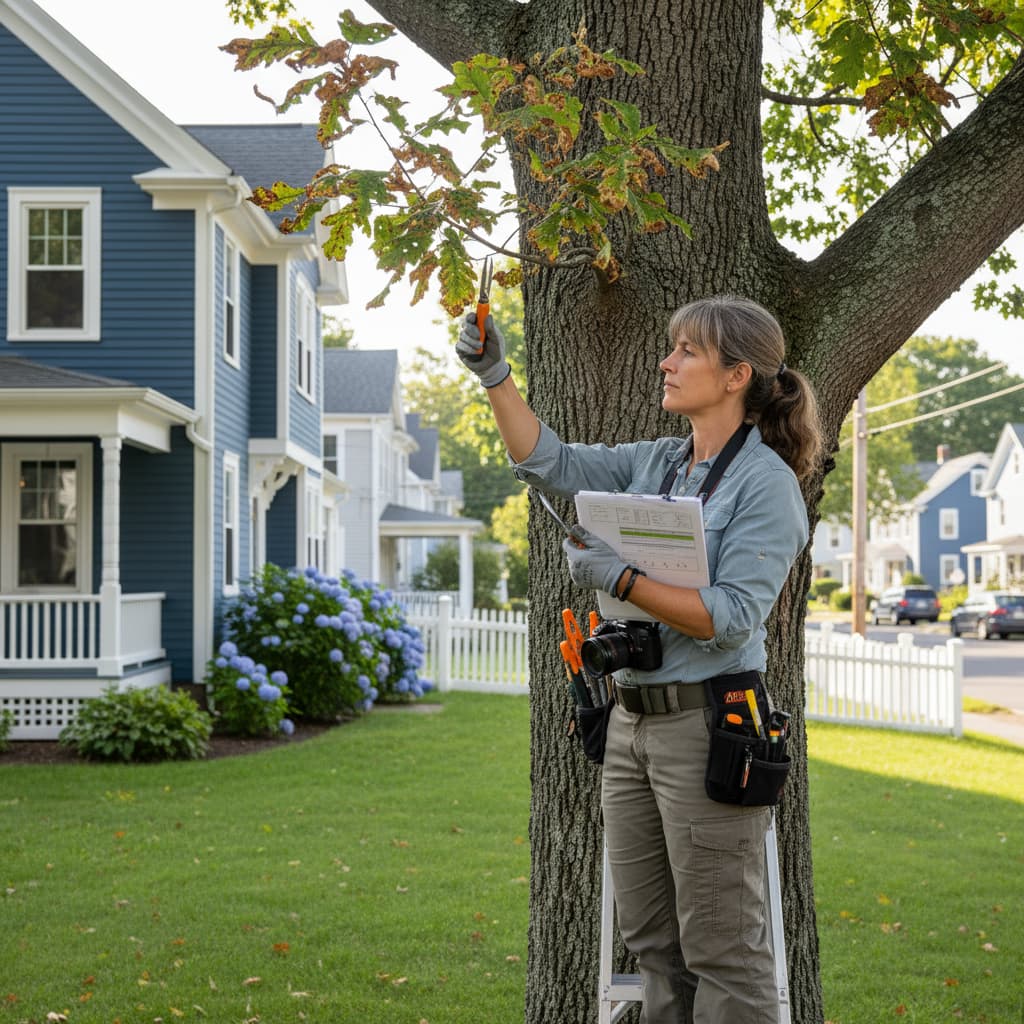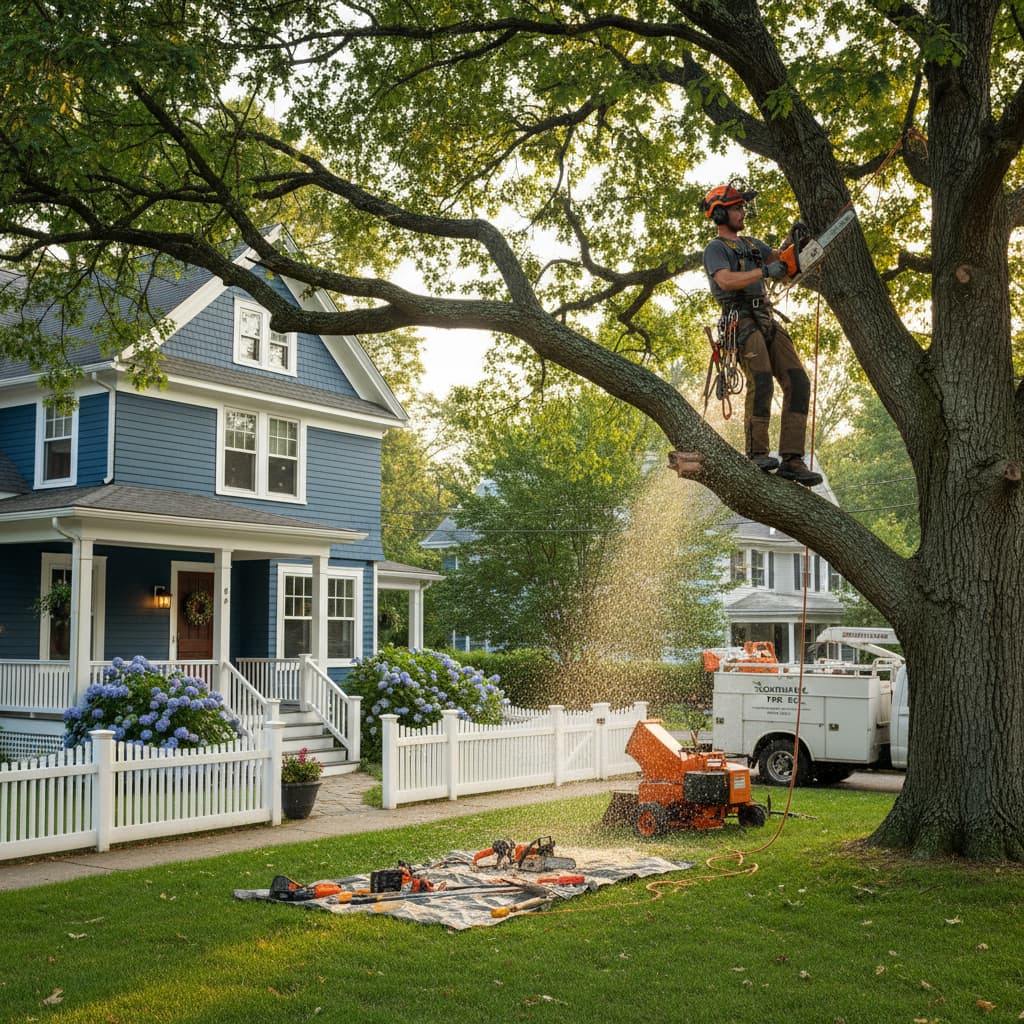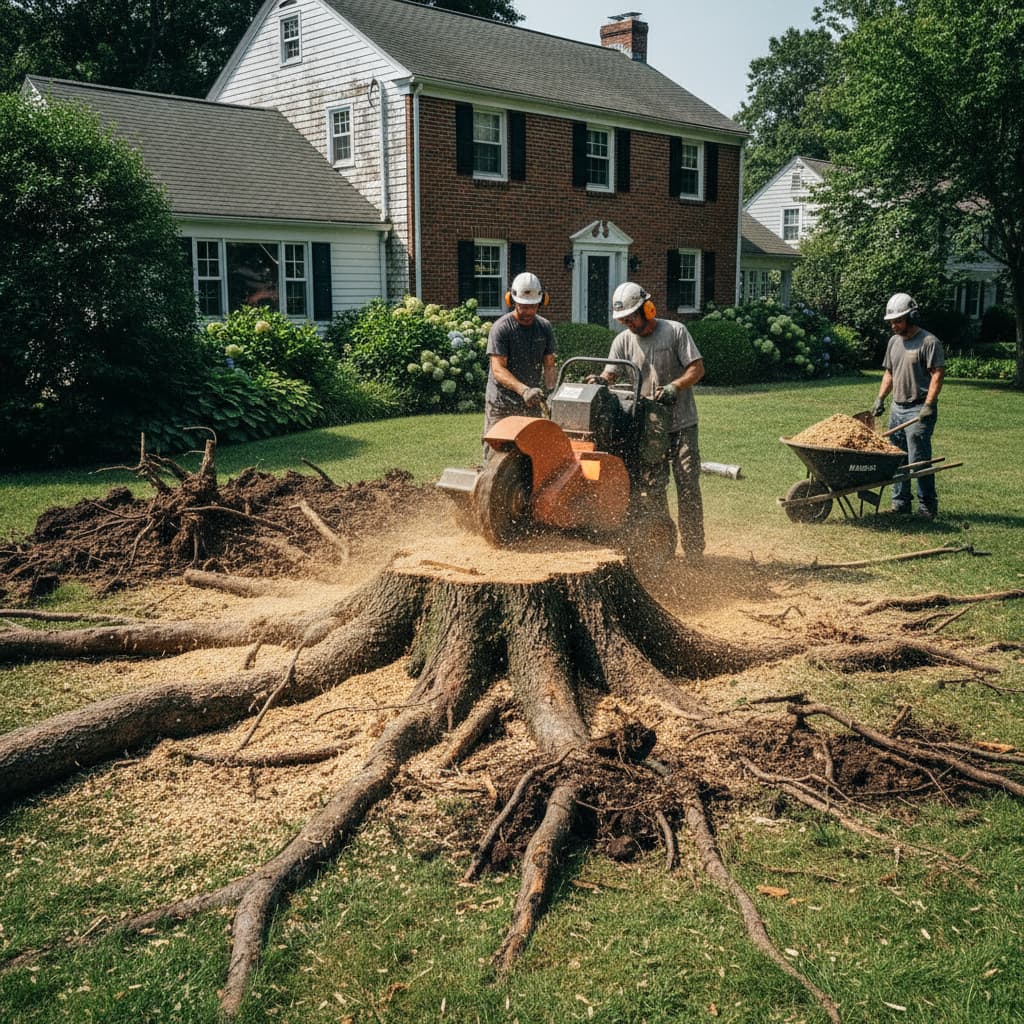Tree Trimming: Avoiding Common Pruning Mistakes
When homeowners search for tree trimming near me, they often attempt DIY pruning projects that can permanently damage their trees. Understanding common trimming mistakes helps property owners make informed decisions about when to hire professionals and how to avoid costly errors that compromise tree health and safety. Somerville Tree Masters frequently encounters trees damaged by improper trimming techniques, emphasizing the importance of proper pruning education for homeowners throughout Massachusetts.
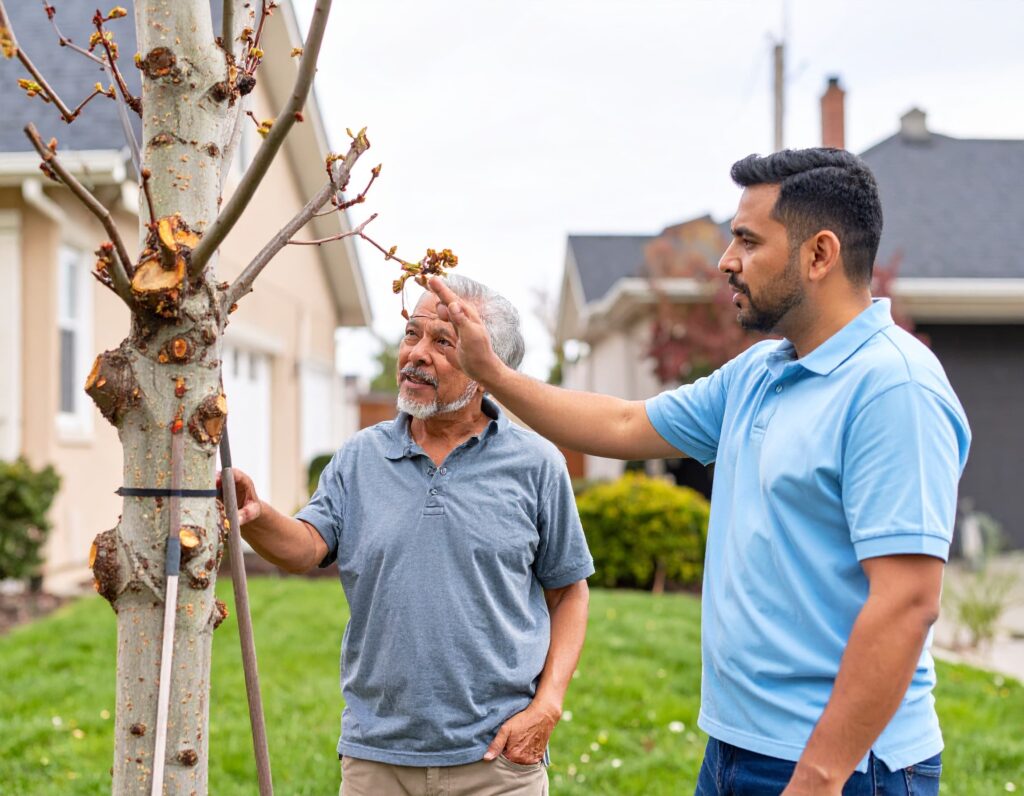
The Most Devastating Mistake: Tree Topping
Tree topping represents the single most harmful trimming practice homeowners commonly attempt. This destructive technique involves cutting through the main trunk or large branches at arbitrary points, completely removing the tree’s natural canopy structure. Despite its popularity among untrained services, topping severely weakens trees and creates long-term hazards.
When trees are topped, they respond by producing clusters of weak, poorly attached water sprouts that grow rapidly from the cut sites. These emergency shoots lack the structural strength of natural branches and frequently break during storms, creating ongoing safety hazards for residential properties.
Why Homeowners Choose Topping
Many homeowners request topping because they believe it will reduce tree size quickly and inexpensively. However, topped trees require more frequent maintenance than properly pruned specimens, as the weak water sprouts must be repeatedly removed to maintain any semblance of control.
Topping actually increases long-term costs through accelerated decay, increased pest susceptibility, and a higher likelihood of tree failure requiring emergency removal. Professional tree trimming services understand these consequences and offer proper crown reduction alternatives instead.
Over-Pruning: Removing Too Much Too Fast
Enthusiastic homeowners often make the mistake of removing too much foliage during single trimming sessions. Trees depend on their leaves for photosynthesis and energy production, so excessive pruning severely stresses them and compromises their ability to recover from the wounds created by cutting.
The general rule limits pruning to no more than 25 percent of a tree’s canopy during any single season. Removing more than this threshold can starve the tree and make it vulnerable to diseases, pests, and environmental stresses that healthy trees normally resist.
Recognizing Over-Pruning Damage
Over-pruned trees exhibit several warning signs, including sparse foliage, weak new growth, increased susceptibility to sunscald, and delayed recovery from seasonal changes. These symptoms often don’t appear immediately, making homeowners unaware of the damage until it’s too late to reverse.
Trees stressed by over-pruning become magnets for opportunistic pests and diseases that exploit weakened specimens. Professional tree trimming services assess each tree’s condition and recommend appropriate pruning amounts based on species, age, and health status.
Timing Mistakes That Harm Tree Health
Improper timing represents another common error when homeowners attempt tree trimming without professional guidance. Different tree species require specific timing to minimize stress and maximize healing responses, but these requirements vary significantly based on flowering habits and growth patterns.
Late summer pruning is particularly problematic because it stimulates new growth that doesn’t have sufficient time to harden before winter arrives. This tender growth becomes susceptible to freeze damage that can kill entire branches or even compromise whole trees.
Species-Specific Timing Requirements
Spring-flowering trees like dogwoods and magnolias should be pruned immediately after blooming to avoid removing next year’s flower buds. Pruning these species during winter eliminates the following spring’s display and reduces the tree’s stored energy reserves.
Trees that “bleed” heavily, including maples, birches, and walnuts, should be pruned during late summer or fall to minimize sap loss. While bleeding doesn’t harm the tree, it can attract pests and create unsightly staining on trunks and surrounding surfaces.
Improper Cutting Techniques
Many homeowners attempt tree trimming without understanding proper cutting techniques, creating wounds that heal poorly and invite disease. The most critical aspect involves identifying and preserving the branch collar, a specialized tissue area that enables trees to compartmentalize and heal pruning wounds.
Flush cuts that remove the branch collar eliminate the tree’s natural defense system against decay organisms. Conversely, stub cuts that leave excessive branch material create entry points for pathogens while preventing proper healing and callus formation.
The Three-Cut Method for Large Branches
Proper removal of branches larger than 1.5 inches requires the three-cut method to prevent bark tearing that can damage trunk tissue. The first undercut partially through the branch, the second top cut removes the branch weight, and the final cut removes the stub just outside the branch collar.
Using dull tools compounds cutting problems by creating ragged wounds that heal slowly and provide numerous entry points for diseases. Professional tree trimming services maintain sharp, properly sized tools and understand which cutting techniques work best for different branch sizes and positions.
Lion’s Tailing and Interior Stripping
Lion’s tailing involves removing all interior branches and foliage while leaving only growth at branch tips, creating a distribution pattern resembling a lion’s tail. This misguided practice concentrates all the tree’s weight at branch ends, creating leverage that increases breakage risk during storms.
Trees require interior foliage for proper photosynthesis and structural support. Removing interior branches eliminates the tree’s ability to develop reaction wood that strengthens branches against wind loads and other stresses.
Proper Canopy Thinning Techniques
Correct canopy thinning removes selected branches throughout the crown while maintaining the tree’s natural shape and balanced weight distribution. Professional arborists remove no more than 20 percent of the living canopy and focus on eliminating dead, diseased, or structurally defective branches first.
Proper thinning improves air circulation and light penetration while maintaining adequate foliage for tree health. This balanced approach reduces storm damage risk without compromising the tree’s ability to produce energy and maintain structural integrity.
Ignoring Tree Species and Growth Habits
Different tree species require distinct pruning approaches based on their natural growth habits, wood strength, and healing capabilities. Homeowners often apply generic trimming techniques without considering species-specific requirements, leading to poor results and potential tree damage.
Some species, like oaks and elms, compartmentalize wounds effectively and can tolerate larger pruning cuts, while others, such as maples and birches, seal poorly and require smaller cuts to minimize decay risks. Understanding these differences proves crucial for successful tree care.
Species-Specific Considerations
Fruit trees require specialized pruning techniques that balance fruit production with tree health, often involving more aggressive pruning than ornamental species can tolerate. Conversely, many ornamental trees perform best with minimal intervention beyond basic maintenance pruning.
Evergreen species generally require different approaches than deciduous trees, with timing and technique variations that can significantly impact their appearance and health. Professional tree trimming services understand these nuances and adjust their approaches accordingly.
Safety Hazards of DIY Tree Trimming
Attempting tree trimming without proper equipment, training, and safety protocols creates serious risks for homeowners. Working with chainsaws, climbing ladders while handling cutting tools, and managing falling branches requires specialized skills and safety equipment that most homeowners lack.
Large branch removal presents particular dangers as falling branches can cause severe injuries or property damage. Professional arborists use specialized rigging techniques and safety equipment to control branch removal and protect people and property during trimming operations.
Liability and Insurance Considerations
Homeowners who attempt complex tree trimming may discover their insurance policies don’t cover injuries or property damage resulting from DIY tree work. This lack of coverage can create significant financial liability if accidents occur during trimming projects.
Professional tree services carry specialized insurance and follow industry safety standards that protect both workers and property owners. When homeowners search for tree trimming, choosing properly insured and certified professionals provides essential protection against liability risks.
Tools and Equipment Mistakes
Using inappropriate tools represents another common trimming mistake that can damage both trees and equipment. Dull chainsaw blades create ragged cuts that heal poorly, while undersized tools force homeowners to make multiple cuts that increase wound size and healing time.
Many homeowners attempt to trim large branches with hand pruners or small saws designed for smaller cuts. This mismatch between tool capability and job requirements often results in incomplete cuts, bark damage, and safety hazards from tool failure or binding.
Professional Tool Selection
Professional arborists maintain diverse tool inventories, including hand pruners for small branches, loppers for medium branches, and professional-grade saws for larger cuts. Each tool serves specific purposes and size ranges, ensuring clean cuts that promote proper healing.
Proper tool maintenance, including regular sharpening and cleaning, prevents the spread of diseases between trees and ensures optimal cutting performance. Professional tree trimming services invest in high-quality tools and maintain them properly for consistent results.
Wound Treatment and Follow-Up Care
Many homeowners believe they should apply wound dressings, paint, or sealers to pruning cuts, but these treatments actually interfere with natural healing processes. Trees have evolved effective wound response systems that work best when left undisturbed by artificial treatments.
Modern arboriculture research demonstrates that wound dressings can trap moisture and create favorable conditions for decay organisms. Proper cuts made at the right time and location heal most effectively without any artificial assistance.
Supporting Natural Healing
The best support for tree recovery involves maintaining overall tree health through proper watering, appropriate fertilization, and monitoring for pest or disease problems. Healthy trees heal pruning wounds quickly and effectively without additional intervention.
Post-pruning care should focus on reducing other stresses that might compromise the tree’s ability to heal and recover from pruning operations. Professional services provide guidance on proper aftercare that supports optimal healing and long-term tree health.
Understanding these common tree trimming mistakes helps homeowners make informed decisions about when to hire professionals and how to maintain their trees properly. While minor pruning may be appropriate for homeowners with proper knowledge and tools, significant trimming projects require professional expertise to ensure tree health, safety, and long-term success.
